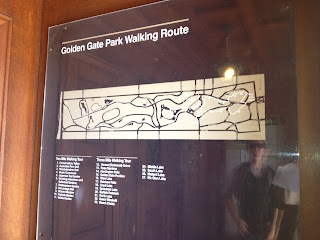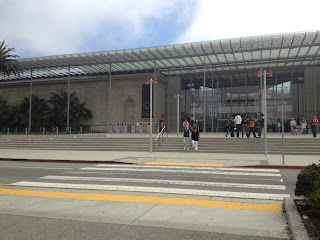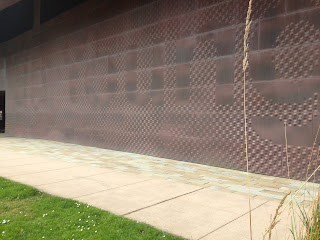Savannah Armer
September 26, 2012
Art 195
Stacy Asher
Golden Gate Park
Thought Paper
Golden Gate
Park is the third most visited park in the United States.[1]
People from all over the world come to see the beauties the park has to offer
and all of the attractions inside. Hidden within the park there are hundreds of
different areas with historical symbolism and interesting back-stories. Around
ever corner there is something new to explore. Golden Gate Park has many
historical monuments that tell the story of the park and frame the history.
Prayerbook
cross is one of the beautiful features of Golden Gate Park that has a very
historical background. It was located
between John F. Kennedy drive and the Park Presidio drive. The was given to the
city of San Francisco from the Church of England, and sits on one of the
highest hills of the park gave the cross to San Francisco in 1894. The cross
commemorates the Book of Common Prayer in California by Sir Francis Drake’s
chaplain on June 24, 1579. [2]
This sandstone cross tells us the history of San Francisco. It lets the
visitors know what an effect San Francisco has had on the global population.
Although getting to the cross is a hike, the beauty of the cross is unmatched,
it is perfectly balanced with the nature. This signage reveals a bond between
the Church of England and San Francisco and the importance they placed on the
Book of Common Prayer. It is such an interesting historical token of what San
Francisco was like in the past.
Another
feature of the park with a rich historical backstory is the Dutch
Windmill. It was built in 1902 for the
total cost of 16,000 to build. It was built to bring in more water to the city,
and is able to pump 30,000 gallons of fresh water per hour via the underground
reservoir on Strawberry hill.[3]
Even through the windmill was successful; in 1913 electric pumps were
introduced which made the windmill outdated. In 1976 the US navy reserve
started to restore the windmill, which was completed by 1981. At the base of
the mill they laid a garden for Queen Wilhelmina, which started the false story
that the windmill was actually a gift for Holland. This windmill at first was for the benefit of
the city but as it as grown in infrastructure, the windmill wasn’t needed
anymore but the city kept in anyway. They understood the importance of history
and the beauty of the windmill. It adds so much history to the park and makes
it even more of a place whether than a space.
The reason
Golden Gate Park is a place instead of a space is the historical significance
of the park. The Park has so many
features which weren’t just put there for aesthetics, but with purpose. They
capture a moment in time, keeping the park timeless forever.
Works
Cited
Berry, Mark.
"Windmills of California." Windmill World. N.p., 24 May 2011.
Web. 26 Sept. 2012. <http://www.windmillworld.com/world/california.htm>.
SFcitizen.
"San Francisco Citizen." The Quasi-Unconstitutional Prayer Book
Cross of Golden Gate Park. Wordpress, 13 July 2009. Web. 26 Sept. 2012.
<http://sfcitizen.com/blog/2009/07/13/the-quasi-unconstitutional-prayer-book-cross-of-golden-gate-park/>.




































































































